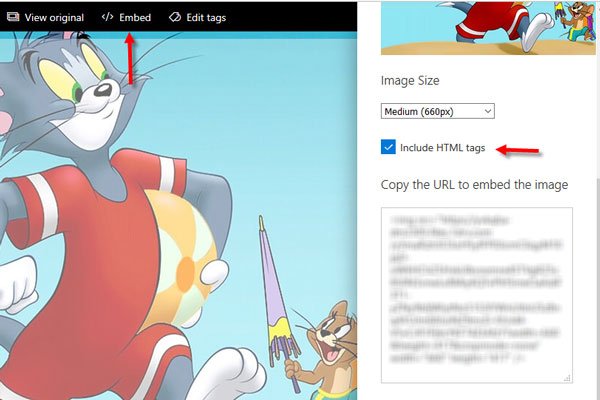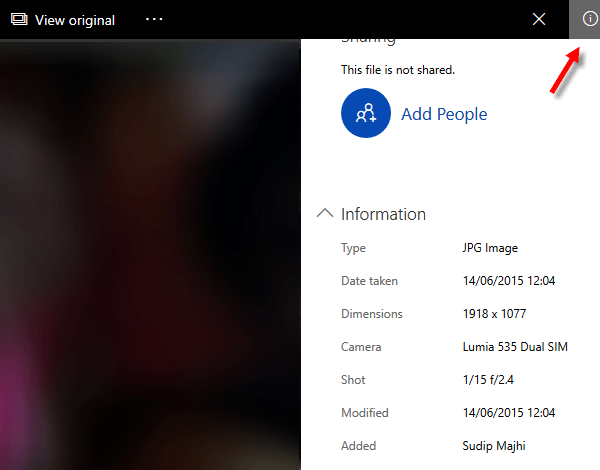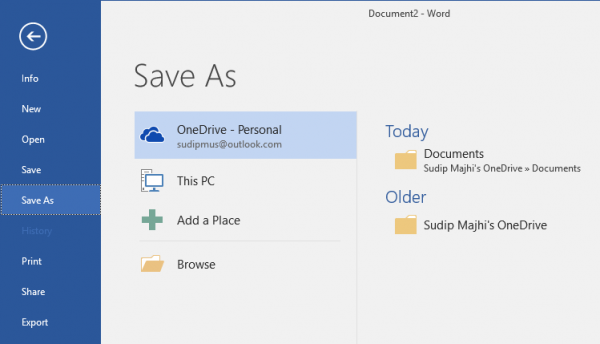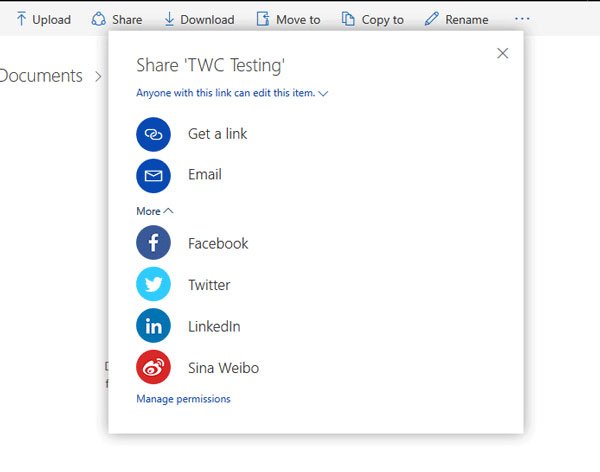Microsoft OneDrive is one of the best cloud storage services that comes with a beautiful user interface, cross-platform support, and a lot of free storage to store your data. If you are new to OneDrive, here are some of the best tips and tricks to use it like a pro on a Windows 11/10 computer.
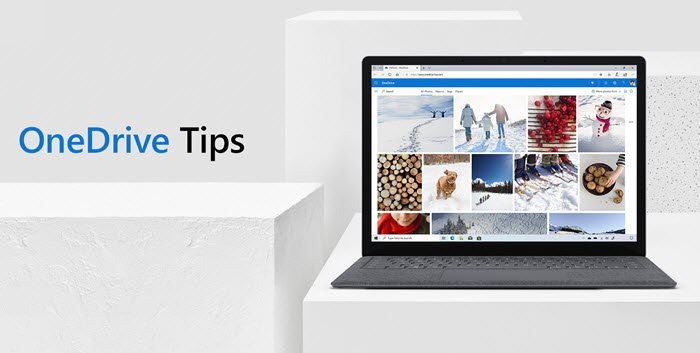
Best OneDrive Tips and Tricks
Some of the best OneDrive tips and tricks are:
- Get more free storage
- Embed file into a web page
- Show Exif data of an image
- Password protect OneDrive on mobile
- Perform tasks in automation using IFTTT & Microsoft Flow
- Directly upload Office files to OneDrive
- Create a shared image album
- Disable previous searches as suggested search terms
- Choose a particular folder to synchronize with PC
- Access your PC files from anywhere
- Use Personal Vault
- Save screenshots automatically
- Enable/Disable syncing on metered network
To learn more about these tips and tricks, continue reading.
1] Get more free storage
Microsoft 365 subscriptions include 1TB of OneDrive storage. You can get 5GB of storage with a free OneDrive account. For those, who rarely use cloud storage to store and synchronize files across multiple devices, this is more than enough. However, if you do use cloud storage or more specifically, OneDrive a lot, that 5GB of free storage may not be adequate for you. There are a few tasks you can perform to get more free storage. You can extend your free storage limit using these subsequent techniques,
- Bing bonus
- Samsung mobile bonus – Some Samsung mobiles come with the OneDrive app, and it lets users get 100GB of free storage for two years.
- Camera roll bonus – If you have a Windows Phone, and you allowed OneDrive to store pictures, you would get 15GB more storage.
- Referral bonus – every time you will get 0.5GB of free storage when your friend signs up through your link.
You can go to the “Manage Storage” section to see all those options.
2] Embed file into a web page
As OneDrive works smoothly with the web version of Word, Excel, etc. many people write notes, and stories, create Excel sheets, or even create presentations in PowerPoint. Now, if you want to embed the file or an image you just uploaded or created in OneDrive, you can get easily to it. This is possible with the help of the inbuilt option of OneDrive.
However, for that, you have to log into the web version of OneDrive, select a file > find the Embed button in the menu bar > Hit the Generate button > Select size (if an image) > Select Include HTML tags > copy the code > Paste that into a page where you want to display it.
3] Show Exif data of an image
In simple words, Exif data or metadata shows everything about the background of an image. That means you can find the date of a picture when it was taken, the modification date (if any), geo-location, device, and more. This information is visible when someone captures the image using a digital camera or mobile. However, downloaded images may not show all that data. To show the Exif data of an image, open it in the web version of OneDrive > and click on the Info icon visible in the top right corner.
4] Password protect OneDrive on mobile
Suppose, you often give your mobile to someone else, and your OneDrive has some confidential files. You can password-protect your OneDrive storage without using any other third-party app since the OneDrive app has the option to do so. Unfortunately, the Windows Phone version has no such function whereas iOS and Android users can get the advantage.
Read: How to encrypt and secure OneDrive files
5] Perform tasks in automation using IFTTT & Microsoft Flow
IFTTT and Microsoft Flow both are good in terms of automating tasks. Both of them can be used with OneDrive. For example, you can use them to:
- Save new email attachment to OneDrive
- Move certain OneDrive files to Google Drive, Dropbox, Box.net
- Save Instagram, Facebook, Twitter, and Flickr images with different conditions
- Save online videos to OneDrive
- Save tweets and create an Excel sheet automatically in OneDrive
Open IFTTT and Microsoft Flow to find out the best recipe or flow and work with them. If you cannot find any, head over to this Microsoft Flow tutorial to learn how to create filters according to requirements.
6] Directly upload Office files to OneDrive
If you are using Microsoft Office, you might have already signed into the Microsoft account while using it. If so, you can directly upload Office files to OneDrive. In other words, it is possible to save files in OneDrive, and that means, you do not have to upload them manually. To do this, open any Office product such as Word, Excel, PowerPoint, etc. on your Windows machine > go to File > Save > choose OneDrive instead of local drive (or, This PC) > choose a location in OneDrive to save the file.
You can also:
- Share and collaborate on files, folders, and photos with colleagues, friends, and family.
- Use Personal Vault to add extra protection to sensitive photos and files
- Use Mover to transfer the files from your school account to your OneDrive personal account.
- Track down deleted files quickly in the recycle bin which is available only on OneDrive for the web.
- Turn on AutoSave on your Word, Excel, and PPT files.
7] Create a shared image album
You can automatically backup your phone’s camera roll to OneDrive to keeping your favorite moments backed up, protected and all in one place.
Facebook allows multiple users to upload images to a single album, and this is called a Shared Album. The same thing can be, done in OneDrive as well. For that, you need to create a folder and invite people to upload their images.
Create a folder in your OneDrive storage and go into that folder. On the top right corner, you can find an Info button. Click on it and head over to the Sharing section. Click on the Add People button and invite someone. You can get the direct link, email the link, or share it on different social network sites. The Manage Permissions section will let you strengthen your privacy.
Tip: This “Add People” function of OneDrive can assist you in creating a shared workspace as well.
8] Disable previous searches as suggested search terms
OneDrive has a useful search box that helps users search for different types of files and folders. OneDrive uses the searched terms as a suggestion when a user goes to use the search box for the second time. If you think that feature is useless, you can head over to this page and hit the Turn Off button.
Read: How to check OneDrive storage space.
9] Choose a particular folder to synchronize with Windows PC
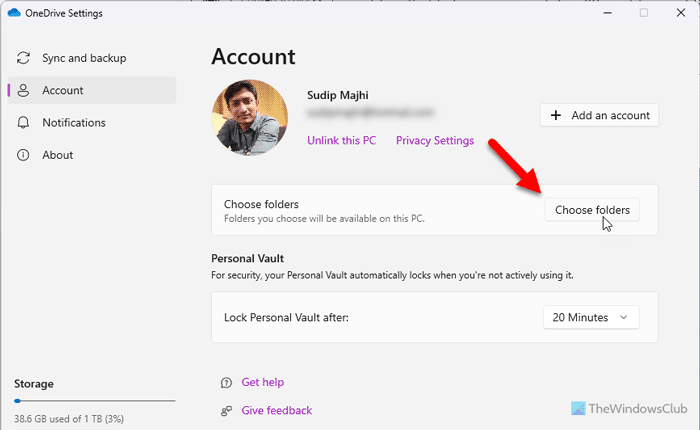
You can turn on PC folder backup to automatically sync your Windows Desktop, Documents, and Pictures folders to OneDrive.
If you are using the OneDrive app on your Windows computer, you might have seen that it synchronizes all the OneDrive folders right after signing into the account. However, if your OneDrive storage has any confidential files and you do not want to synchronize that with your PC, you can allow or block a certain folder to be synchronized. To do so, right-click on the OneDrive icon in your Windows system tray > select Settings > under Account tab, you can find the Choose folders option that you need to click on > now select the folder that you want to synchronize and uncheck others. After hitting the OK button, OneDrive will sync only those selected folders.
If you wish, you can also stop or pause syncing in OneDrive.
10] Access your PC files from anywhere
Suppose, you have forgotten your laptop at home, but you need a file right away. If you have the OneDrive app installed on your office computer, you can easily get your file. But, for that, your PC should have an internet connection. Under the Settings tab check the option that says Let me use OneDrive to fetch any of my files on this PC.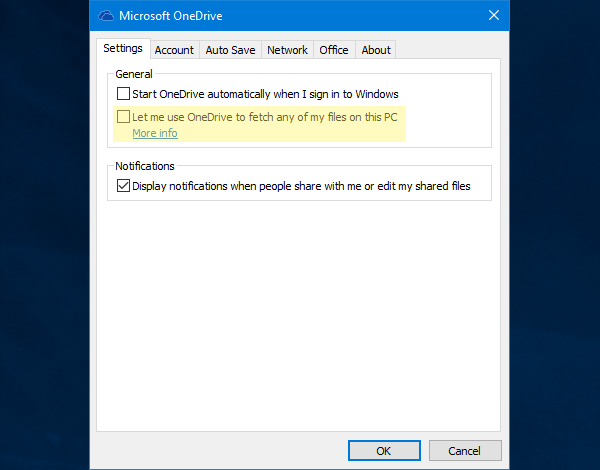
You may have to perform a security check, after which you will be able to fetch your PC files right from the PCs section in OneDrive. You will get all the files and folders including software, documents, images, etc.
You can also:
- Use the OneDrive mobile app to access or share files and photos right from your mobile device.
- Use the OneDrive app on your phone to scan and save multiple pages of printed documents.
11] Use Personal Vault
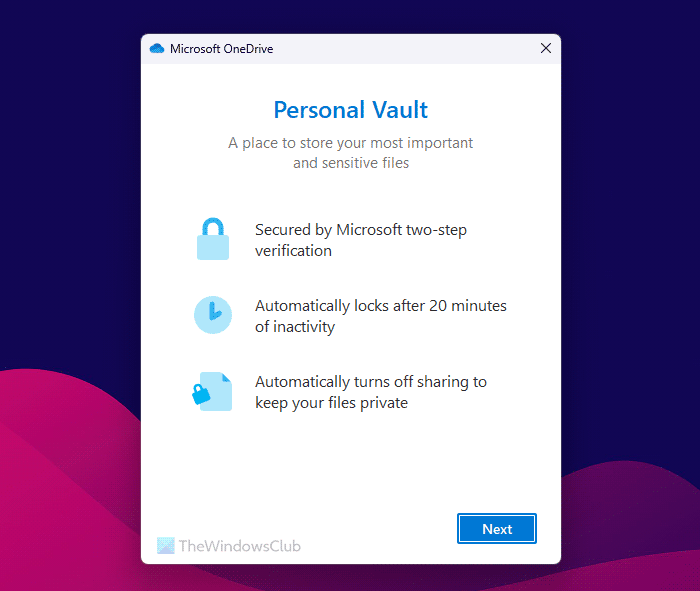
Personal Vault is a locked folder that you can use to upload files and lock them instantly. As it needs additional authentication, you need to re-enter your password to access files stored in Personal Vault. You can set a timer from 20 minutes to 4 hours as per your requirements. After that, it will be locked automatically. If you have a paid plan, you can upload as many files as you want whereas free edition users have a limitation on file numbers.
Read: How to change OneDrive Personal Vault Lock Time in Windows
12] Save screenshots automatically
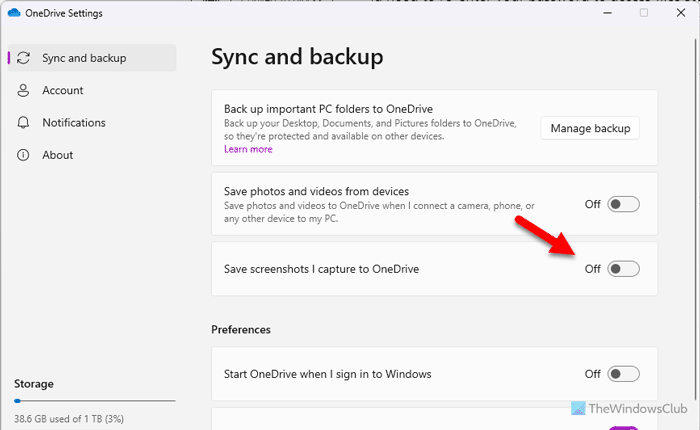
If you use OneDrive on a Windows 11/10 PC, you can save screenshots automatically on this cloud storage. For that, you need to enable a setting. To do that, follow these steps:
- Open the OneDrive Settings wizard.
- Go to Sync and backup tab.
- Find Save screenshots I capture to OneDrive.
- Toggle the button to turn it ON.
13] Enable/Disable syncing on metered network
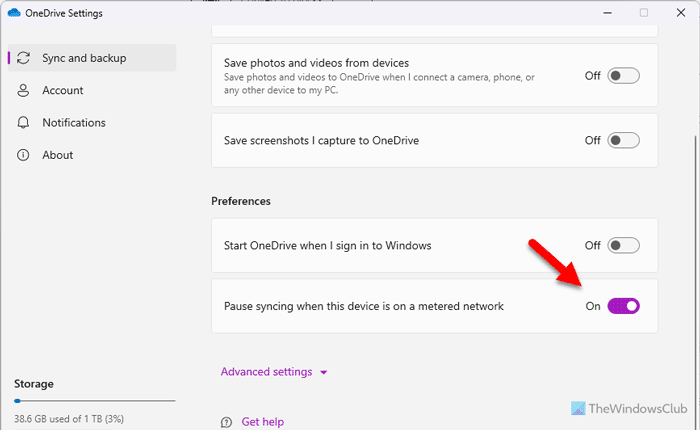
If you are on a metered network and want to save bandwidth, it is better to disable syncing or uploading files. On the other hand, if you want to upload files even on a metered network, you can do that as well. To enable or disable syncing on a metered network, follow these steps:
- Open the OneDrive Settings panel.
- Go to the Sync and backup tab.
- Head to the Preferences section.
- Find the Pause syncing when this device is on a metered network option.
- Toggle the button to turn it ON or OFF.
Hope you find these Microsoft OneDrive tips & tricks useful.
Read: How to upload unlimited files to Personal Vault in OneDrive on Windows
How do I use OneDrive most effectively?
OneDrive has a vast number of options that you can use to get the most out of it. This article houses some of the best tips and tricks that you might want to take a look at. From saving screenshots, enabling Personal Vault, and connecting IFTTT, to checking EXIF data, you can do everything with the help of OneDrive.
How can I improve OneDrive performance?
To improve OneDrive performance on Windows 11/10, it is suggested to use a wired internet connection instead of a wireless connection. The second most important thing is that you should choose multiple small files at once instead of choosing a big amount of data. The last but not the least option is the Start OneDrive when I sign in to Windows which can be found in the Sync and backup tab in the OneDrive Settings panel.
